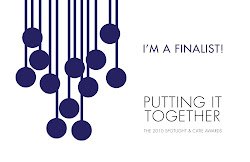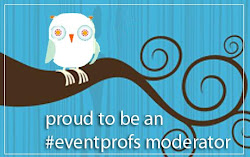After reading my last posting, Musings of an Event Designer..., I thought I should expand on some of these ideas. As a reader, I know what you are thinking: That is all well and good theoretically, but my event still needs design! For your benefit, I will offer these continued musings:
Spotting Trends: This task is easier than most people think. It simply requires the ability to pay attention and be tuned in. If you want to know what culture is doing or what color is popular – turn on TV and watch the ads. You know which ones stand out, and pay attention to their choices of style, language, colors, shapes, fonts for text. These companies spend ba-gillions to sell products so piggyback on the research and focus groups they have paid for to generate your ideas. Want to know what color is in this season – you could look to the red carpet, but it is easier to follow the red bulls-eye; into Target that is. Walk up and down the aisles, particularly home furnishings, seasonal, and notice what is on the end caps. Target has a remarkable ability to be on trend within six months for retail, a time line that gives you as an event planner at least a year to work with. Continue your search through other stores in the mall – Pottery Barn, Crate and Barrel, Abercrombie & Fitch, or the Apple Store. Target great brands that understand who they are. Think Google, Disney, or again, Apple. In hospitably, W Hotels articulate this better than any in my opinion, and the rest of the Starwood properties rate up there too. And never skip over culture magazine and industry publications: BisBash, Event Design Magazine, Event Solutions Magazine, Special Events Magazine.
But often trend is more nuanced and detailed. While these examples will make you aware of general trends, focus in on the attendees of your group – what is the demographic and what do they like to do. Take the opportunity to experience and understand the lifestyle of your guests and simulate those experiences in your event. Remember always to aim high – guests are savvy and smart and there is nothing worse than an event that generalizes its design, packaging a theme or décor and “talks down” to them.
Thoughts on Theme: I apologize to everyone I will offend with this, but any packaged theme I have ever been offered, experienced or seen has been nothing more than a glamorized prom. Props have their place, but most “Themes” use and abuse them to their clients’ and guests’ dismay.
Event design cannot be packaged and resold because every event is unique. But if I have to make one generalization, I will say this: Personalize it. The trend in design as in culture is toward AUTHENTIC, PERSONALIZED EXPEREIENCES. People do not want Casino Night or Hawaii at their event as defined for so many year in the traditional prop sense so many of us are familiar with. That does not mean guest don’t enjoy casino games or tropical drinks and/or foods – but there is nothing authentic about plastic leis and giant fuzzy dice. Similarly, there is nothing personalized about the Tiki Hut with fake umbrella and plastic lanterns serving margaritas or the white lounge furniture in the VIP lounge. Integrate messaging into the décor through linens and lighting. Target entertainment towards not only the taste of your guests but also the purpose of the event. Enliven the experience with authentic details. The future of good event design is towards a nuanced, in depth understanding of your guests so that you provide design and décor that allows the guests to create their own adventure throughout the offered event experience.
Understand Your Boundaries: All events are bound with limitations – time of day, demographic of the guests, or the seemingly always challenging budget. Understand these boundaries and use them to your advantage when designing your events. Consider venue shape and space, or the events time of day. Think about what your attendees like, don’t like, and could like if given the opportunity. Hidden in these limitations are jewels to innovate upon as your design your experience. Remember innovation is hardly big and dramatic, but more often involves simple half-turns on a familiar idea or experience. Doing little things, slightly differently – mixing the shape or sizes of tables, serving food on a different shaped plate or family style rather than plated or buffet, or even switching the order of the program and dinner – will keep your guests comfortable while offering up something new.
Last but not least, remember this: Design is not décor, and décor is only one aspect of design. Good design is holistic in its approach. It is about articulating an idea throughout the event experience, not only in your tabletop décor but in the food, the lighting, the invitation and the gift bag. The more integrated, consistent, and, on the whole, simply your idea, the more memorable the event will be for your guest. It is a fine art-defining design-and guests are intuitively intelligent. They know when something is off, but more importantly they know when all the elements are working together. And in those moments great event experiences are created.
Friday, March 27, 2009
Continued Musings....
Labels:
Apple,
BisBash,
Creative Idea,
Event Design,
Event Design Magazine,
Event Solutions Magazine,
Google,
Special Events Magazine,
Target,
Themes,
W Hotels
Subscribe to:
Post Comments (Atom)






No comments:
Post a Comment